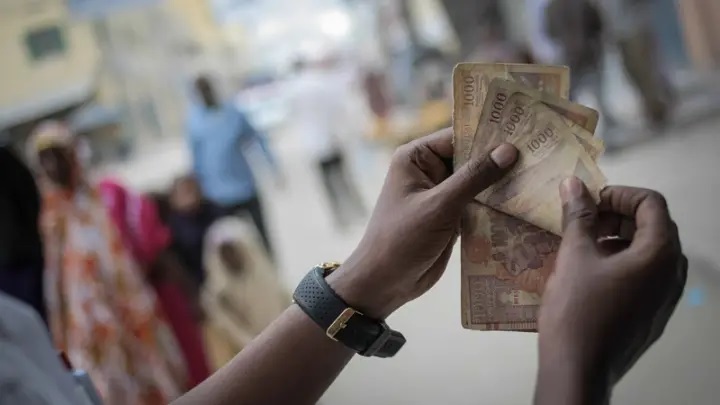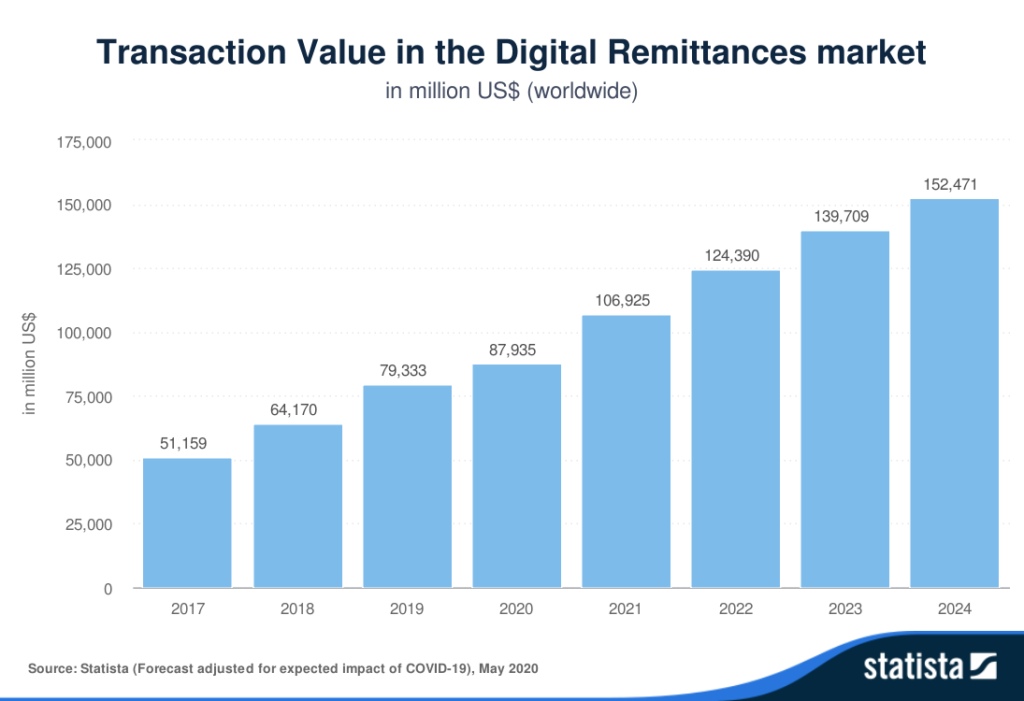
The trajectory of the money transfer and remittance industry is an interestingly polarising one of late, with many variables leaving the sector on a proverbial tipping point. A new report from MoneyTransfers.com finds the industry’s direction very much weighs in the balance.
“From international travel to retail, COVID-19 has hit every aspect of life around the world. In parallel, similar effects have been seen in the world of business, which has seen the biggest drop in activity since the great depression. However, the trajectory of the money transfer and remittance industry has been an interestingly polarising one, with the World Bank predicting the sharpest decline of remittances in recent history. They project that global remittances are to decline by almost 20 percent in 2020 due to the economic crisis induced by the COVID-19 pandemic and lockdown measures emplaced by countries around the world,” said Jonathan Merry, CEO of MoneyTransfers.com.
In April this year, The World Bank predicted the sharpest decline of remittances in recent history. They projected that global remittances were to decline by almost 20% in 2020 due to the economic crisis induced by the COVID-19 pandemic and lockdown measures emplaced by countries around the world.
We’ve seen the biggest drop in activity since the great depression, which is why such a prediction from the World Bank should not come as a surprise.
However, MoneyTransfers.com have found that for some companies within the industry, notably online companies such as PaySend, TorFX, Currency Direct and CurrencyFair – who all target different customer segments in the money transfer market – all posted record-breaking activity in March 2020 as lockdowns descended across the world. At Paysend, for instance, March and early April saw an increase in both users and transfer activity by more than 15%. TorFX Managing Director Nigel Fox said that March was the “busiest month since the company was founded in 2004,”. Moreover, CurrencyFair CEO, Paul Byrne, also remarked on his company’s “record-breaking March’ as ‘transaction volumes were up 30% compared to original forecasts,”. Elsewhere, Marc Morley-Freer, Global Head of Private Clients at Currencies Direct said that of the Currencies Direct customers surveyed, 84% said their money transfer needs “were the same as before the crisis,” with the virus not seemingly not impacting the company.

“It’s hard to ascribe just one cause to the downward trend in global remittance payments, and MoneyTransfers.com believes another contributing factor has been individuals being unable to leave their homes while under lockdown, meaning they have been unable to make it to physical stores to transfer funds. This effect has been noted in a variety of publications, and there appears as a result to have been a large change of user behaviour in favour of using digital channels to transfer money. Many of our partners operating in the money transfer and remittance space have noted this change, and it has interesting implications as to how the business of money transfers may be adapting to the current crisis,” added Jonathan Merry, CEO of MoneyTransfers.com.
Moreover, data released by Statista, with projections adjusted with COVID-19 in mind, found that remittance transaction value will rise to $89 billion this year, compared to $79 billion in 2019. It’s projected to continue to rise to $107 billion in 2021.
Jonathan Merry of MoneyTransfers.com stated, “We saw unprecedented activity in the run-up to the lockdown and even during the early few weeks of April. This wasn’t just us, but our partners as well as other leading digital platforms. I think there were multiple factors at play here – one being an influx of new users, unable to make their usual cash transfers at physical stores due to lockdown measures, forcing them online. The other being that once online, these new users were able to see just how competitive the rates were in comparison to traditional brick and mortar operators as well as the ease of service. This experience could well have shifted user behaviour in favour of online services and ultimately, continue to be the trend even as lockdown measures start to relax over the coming months.
The full report covers the remittance and money transfers industry from the start of the pandemic to now, quotes on the performances of some the biggest players in the field, the multiple variables at play, the role of digital and future projections.
Tradersdna is a leading digital and social media platform for traders and investors. Tradersdna offers premiere resources for trading and investing education, digital resources for personal finance, market analysis and free trading guides. More about TradersDNA Features: What Does It Take to Become an Aggressive Trader? | Everything You Need to Know About White Label Trading Software | Advantages of Automated Forex Trading



































